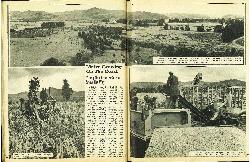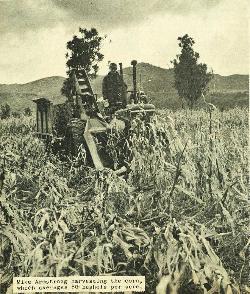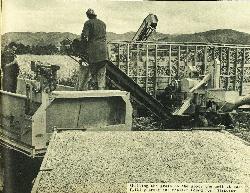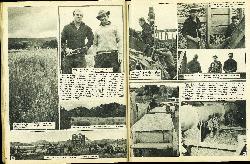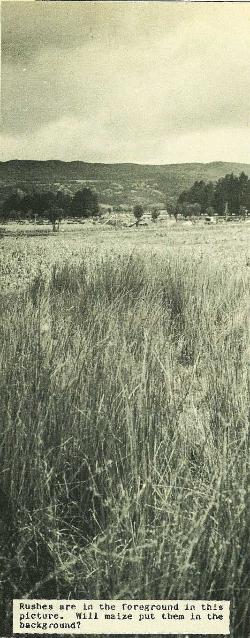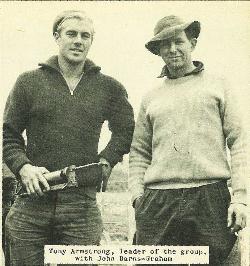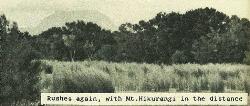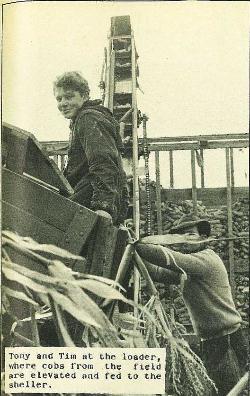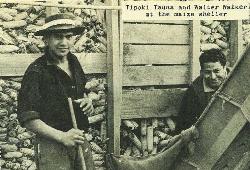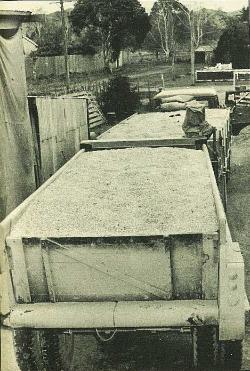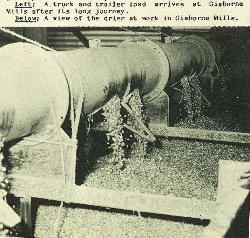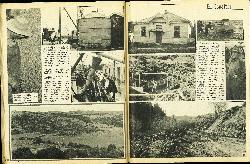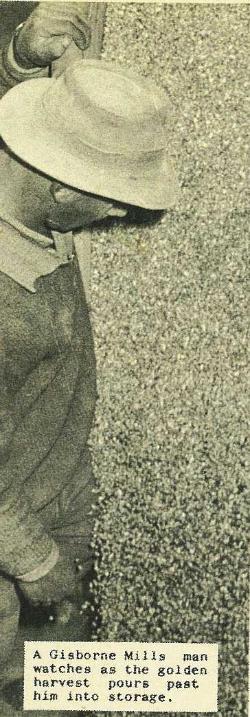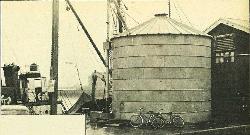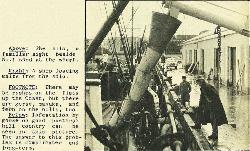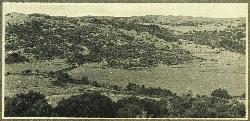52
Maize Growing On The Coast
Young Men From Gisborne Show The Way
A lot has been heard of the deterioration of farm lands up the East Coast, and it needs only a quick visit to take in a depressing picture of rich flats going back to rushes, and pastoral hill country disappearing beneath the growth of gorse and scrub.
Not everywhere, of course, but enough to cause grave concern for the future.
There is no room here to discuss the manifold causes of this deterioration. The main interest of a recent visit by "Photo News" to Ruatoria was to have a look at what four young men from Gisborne are doing in the Kokarika valley, taking dairying flats which have gone back to rushes and growing 100-bushel maize crops on them.
Tony Armstrong and John Barns-Graham, with Tony's brothers Tim and Mike making up the foursome, will truck out 20,000 bushels of good quality maize from 250 acres they have worked there this season.
Next year they hope to have 400 acres under cultivation.
The maize has to be trucked all the way to Gisborne for disposal, which takes some of the "cream off the corn", but the demonstration they have given over the past four years lends substance to the belief that agricultural pursuits could well be the spearhead of regeneration on the Coast.
53
Shelling the grain on the spot: the unit at work filling truck and trailer bound for Gisborne.
54
One difference between growing maize in Ruatoria and in Gisborne is that Ruatoria has nearly twice the rainfall. Up where this experiment is being carried out, the annual rainfall is about 80 inches, and requires a strict timetable. As soon as the rains ease off in October, the land is prepared and planting pushed ahead with all speed. Not all the land put down in maize by the young Gisborne syndicate was infested by rushes, but their experience has shown that badly-infested country can be cleared and sown down in a season, and will yield 100 bushels to the acre. The site of the work is only two or three miles from the home of the late Sir Apirana Ngata, who would doubtless have taken a lively interest in proceedings had he still been around today.
55
With improved roading up the Coast, agricultural produce from potential cropping lands up to 100 miles north of Gisborne could well serve to feed growing Gisborne canning and processing needs. Maize is dried and processed in Gisborne. Much is then processed here into poultry and stock foods, and some is shipped away.
Tony and Tim at the loader, where cobs from the field are elevated and fed to the sheller.
Tipoki Tauna and Walter Walker at the maize sheller
Also on the job: Wallace Mackey, Raana Goldsmith, and Sam Dewes.
A truck and trailer load arrives at Gisborne Mills after its long journey.
A view of the drier at work in Gisborne Mills.
56
A small grain silo at the wharf was built a few years ago to facilitate bulk deliveries to waiting coastal vessels. After being dried, the bulk maize is fed into the silo, from where it is transferred by mechanical means to the ship's hold.
Footnote: There may be rushes on the flats up the Coast, but there are gorse, manuka, and fern on the hills, too.
A Gisborne Mills man watches as the golden harvest pours past him into storage.
The silo, a familiar sight beside No.1 shed at the wharf.
A ship loading maize from the silo.
Infestation by gorse on good pastoral hill country can be seen in this picture. The answer to this problem is complicated and long-term.


